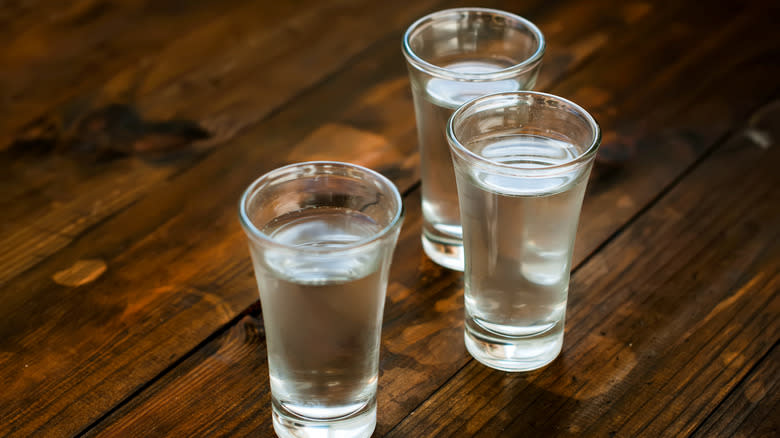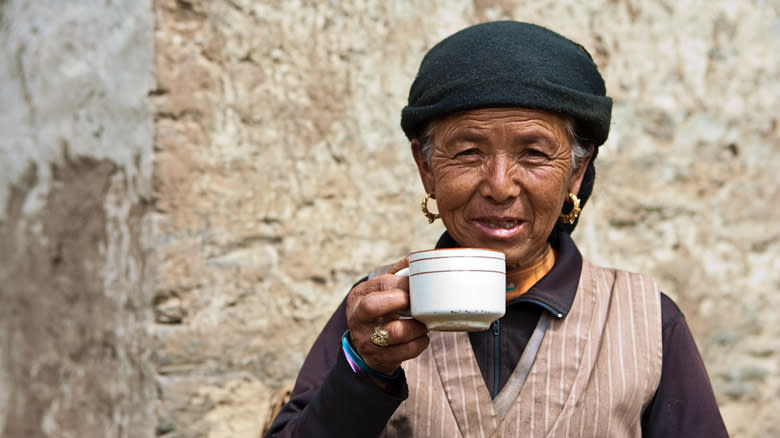Raksi Is An Iconic Nepalese Alcoholic Drink That's Often Brewed At Home

In the high mountains of the Himalayas, a delicious home brew can be found. Raksi (sometimes spelled rakshi) is a general Nepali term for distilled spirits but also refers to a specific alcoholic drink made from kodo millet or rice. Raksi can also be made from wheat, potatoes, corn, barley, or even fruit, but millet is the most common. When made from millet, raksi is clear in color with a harsh nose but a smooth taste often compared to sake. Raksi is generally served at room temperature, though some people like to drink it warm.
Raksi is commonly fermented in the backyards of rustic homes scattered around the countryside. Each region of Nepal is known for its own style of raksi, with some being more respected than others. Supposedly, the way to identify a good quality raksi is to light a match next to it. If it lights up in a blue flame, you've got the good stuff.
Don't worry, it's not as strong as that makes it sound. Alcohol can be flammable past 40% alcohol by volume (ABV), and most raksi is around 45% ABV. That's comparable to a low-proof whiskey, which may be why raksi is sometimes called Nepalese whiskey. The smooth taste of a 15% ABV sake combined with the high proof point of a whiskey makes raksi a little dangerous for the unaware. Better to sip on it if you've never tried it before.
Read more: The 40 Absolute Best Cocktails That Feature Only 2 Ingredients
Raksi Is A Nepalese Staple

The Nepalese people drink raksi at festivals and celebrations, but it's not reserved for special occasions only, similar to how Westerners drink alcohol. Sure it's a celebratory thing, but many of us sip on something after a long day at work or while out with friends. You'll often find a bottle of raksi stored in an empty two-liter jug of soda tucked under the counter of various homes and shops, with people routinely sipping on it throughout the day. Scientists have even suggested that it's a good cure for high-altitude sickness, according to BioMed Central.
Raksi is made using an interesting contraption of earthenware and copper pots that works similarly to a copper pot still. At the bottom is a large copper pot sitting over a fire — this is where the millet is cooked and fermented. Nestled on top is a large earthenware pot that has a smaller earthenware bowl sitting inside. The large pot has holes in the bottom for water vapor to pass through. The opening on top is covered by another copper pot filled with cold water, which is regularly replaced as the water inside heats up. After a couple of weeks, the raksi is ready to serve.
Read the original article on Tasting Table.

